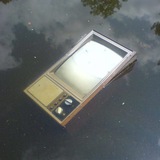Forwarded from Mediocrity at its finest (Cutthroat_TG)
vxTwitter - GIF
jn3008 (@jn3008)
collab with @etiennejcb
💖 391
💖 391
Forwarded from 🔞 The Gas Station 🏳️⚧️ (𑁍 [ITERATION: Calliope] 𑁍)
YouTube
Otacon warns Snake about Miku
I haven’t animated in 3 years sooo I’ll practice some more dw!
If you like my art and want to see more, find me here!
https://www.instagram.com/x.basement.buddy.x/?hl=en
Here is the OG audio from Otacon’s real voice actor in case anyone is curious
h…
If you like my art and want to see more, find me here!
https://www.instagram.com/x.basement.buddy.x/?hl=en
Here is the OG audio from Otacon’s real voice actor in case anyone is curious
h…
Forwarded from сделал репост
This media is not supported in your browser
VIEW IN TELEGRAM
Nick Kempton
Forwarded from сделал репост
This media is not supported in your browser
VIEW IN TELEGRAM
andythomasartist
❤🔥1
Forwarded from DMA.
This media is not supported in your browser
VIEW IN TELEGRAM
Forwarded from Snep Shenanigans❄️❄️ (Ice (in) Summer)
This media is not supported in your browser
VIEW IN TELEGRAM
Forwarded from ⸙anachronistic leaves🌿
This media is not supported in your browser
VIEW IN TELEGRAM
Trautonium jam by @tludowic. 🎛️
The Trautonium is an electronic synthesizer invented in 1930 by Friedrich Trautwein in Berlin at the Musikhochschule’s music and radio lab, the Rundfunkversuchstelle.
Instead of a keyboard, its manual is made of a resistor wire over a metal plate, which is pressed to create a sound. Expressive playing was possible with this wire by gliding on it, creating vibrato with small movements. Volume was controlled by the pressure of the finger on the wire and board.
The Trautonium is an electronic synthesizer invented in 1930 by Friedrich Trautwein in Berlin at the Musikhochschule’s music and radio lab, the Rundfunkversuchstelle.
Instead of a keyboard, its manual is made of a resistor wire over a metal plate, which is pressed to create a sound. Expressive playing was possible with this wire by gliding on it, creating vibrato with small movements. Volume was controlled by the pressure of the finger on the wire and board.
